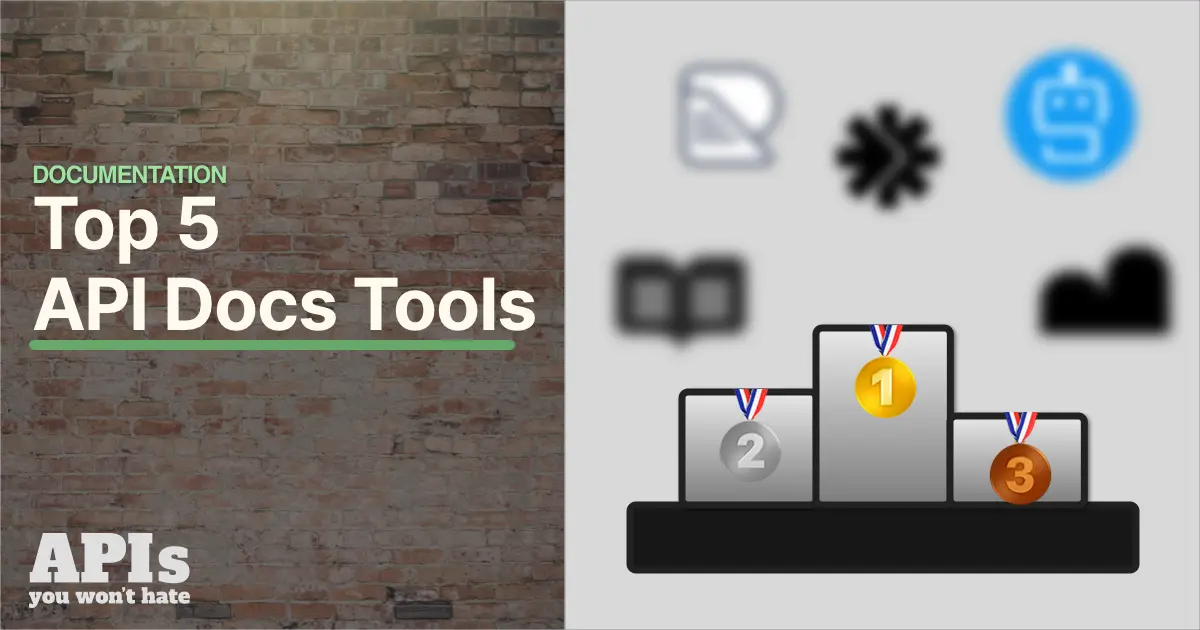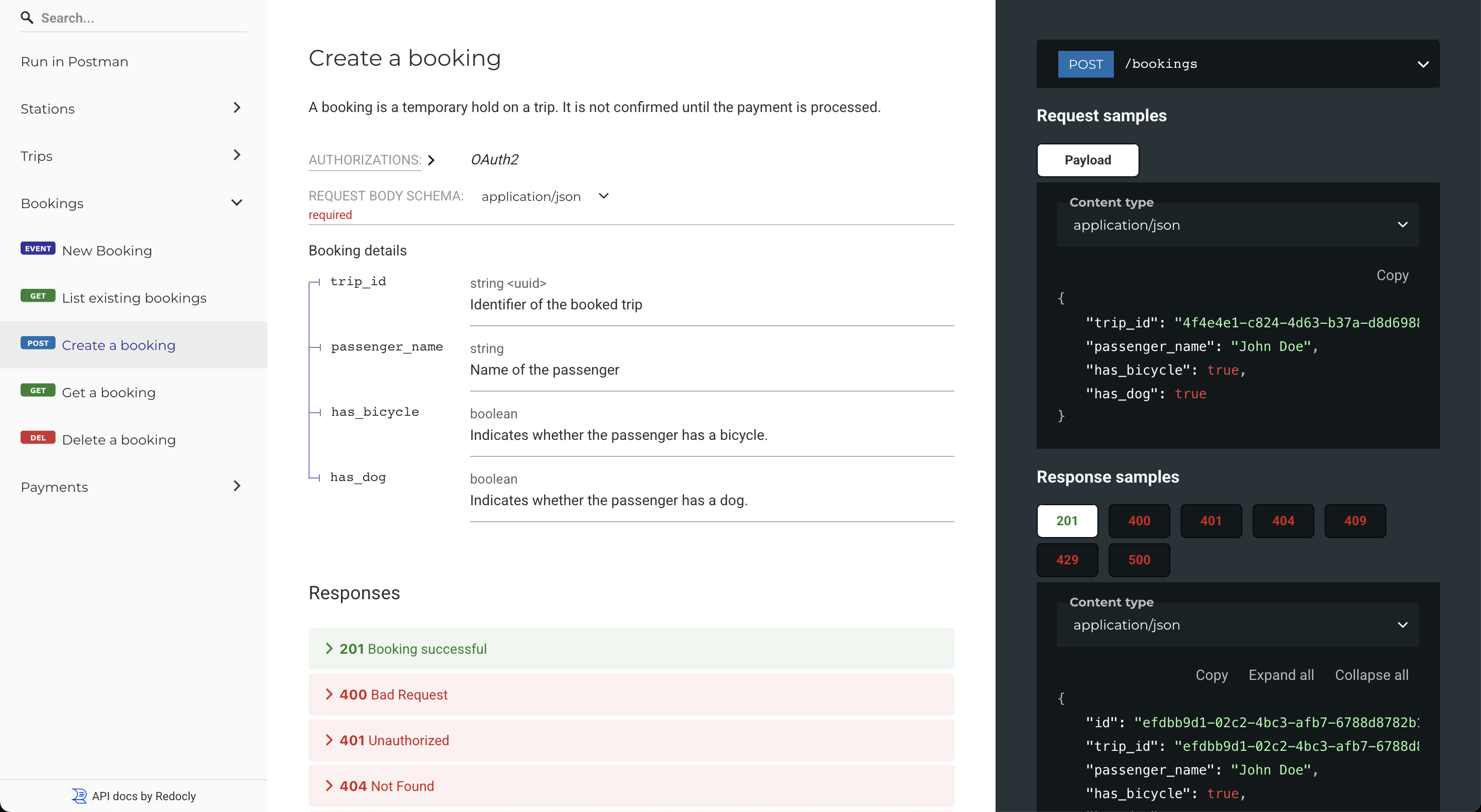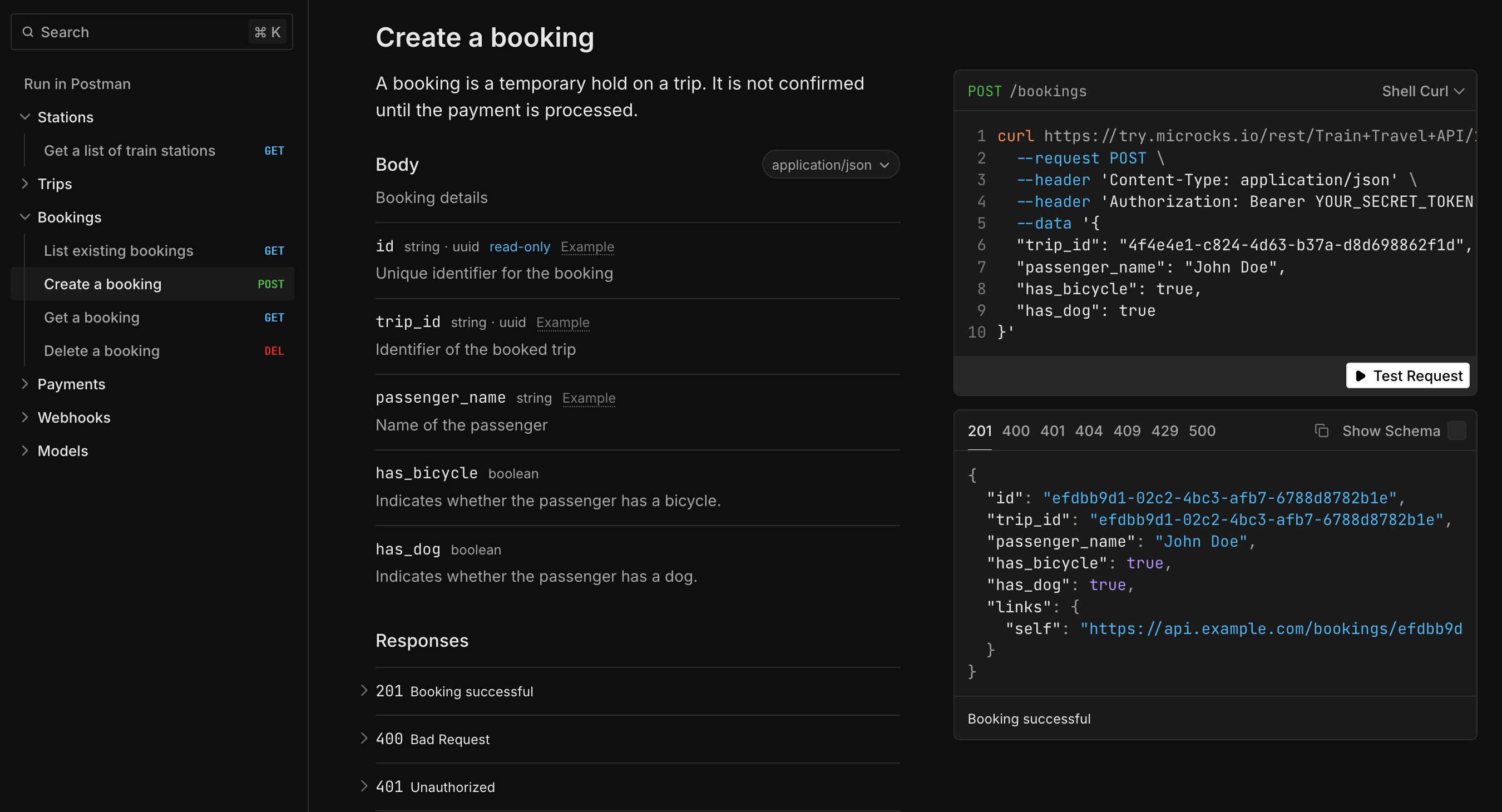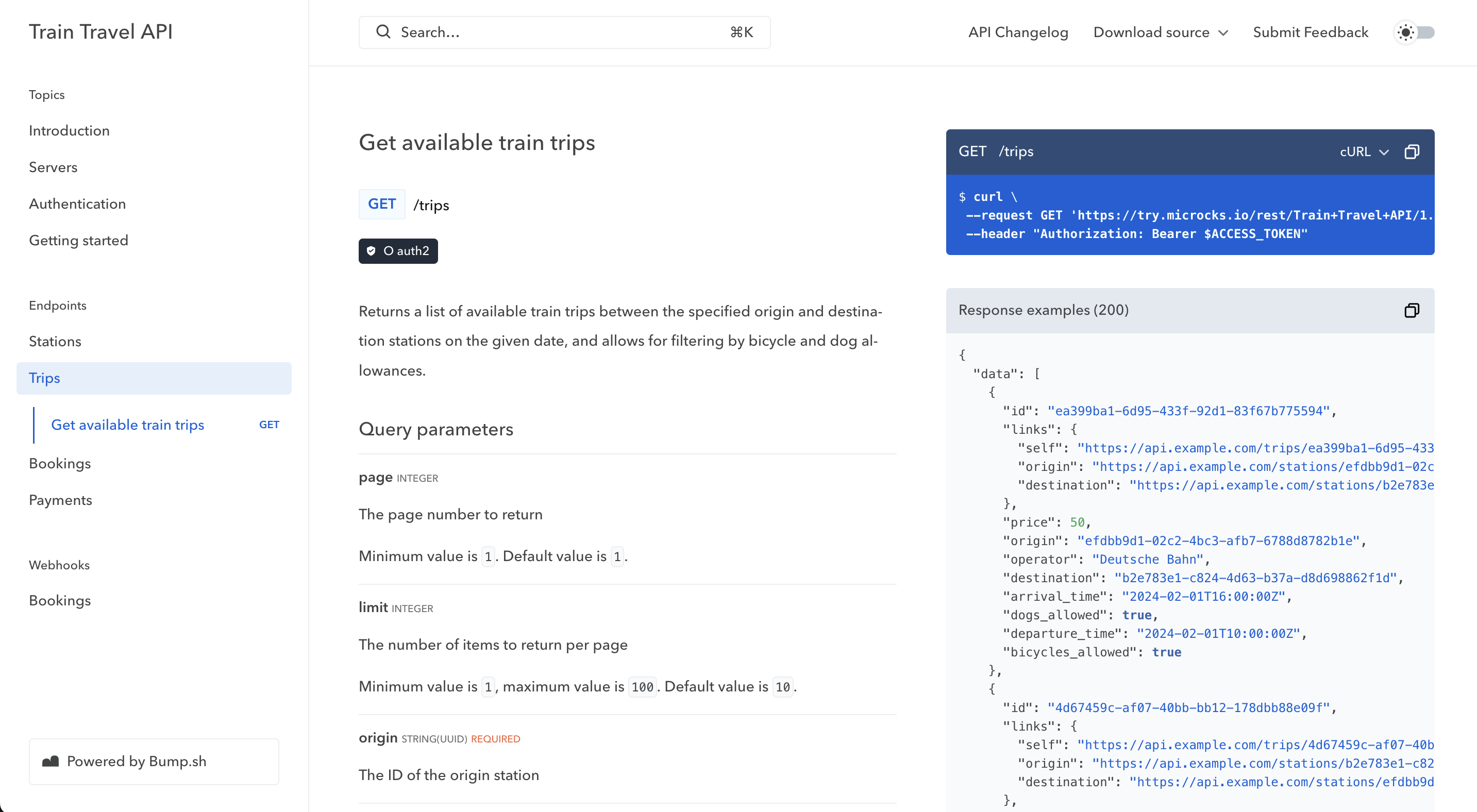The 5 Best API Docs Tools in 2025
Which API documentation tool is the best? It Depends™! Let's go through the best modern tooling and look at when you might want to pick one over another.

Without documentation nobody knows an API exists or how to use it, so it’s worth investing the time in creating clear, useful, understandable documentation. This will help customers integrate with their applications quicker, cut down on support calls, and allow coworkers to onboard quicker as they join the company or move teams.
Fully documenting an API can be a long and difficult process, but new tools are always popping aiming to solve the problem in different ways. Some are open-source and some are Software-as-a-Service, some focus on beautiful interfaces, some focus on powerful functionality, and some focus on jamming AI all over the place.
There’s no one tool to rule them all, and different tools may be chosen depending on who is in charge of setting up the documentation (API developers, technical writers, governance teams) and the intended audience (public APIs, internal APIs, partner APIs).
There’s also the question of if this is for a single API or multiple APIs, whether or not other types of guides are supported (often via Markdown), and whether they support API discoverability through API catalogs to help customers pick between those various APIs or if you need to build that yourself.
To learn which documentation tools can be helpful for different scenarios, let’s compare the most popular OpenAPI documentation tools, in no particular order:
Redoc
Redoc is an old champion in the OpenAPI documentation world, built by Redocly to offer a beautiful “Stripe-like” two or three panel experience back when the only real choice was the less appealing Swagger UI.

Redoc is also available as a self-hosted/open-source option, and a hosted version is available as part of a larger SaaS platform Realm.
Self hosted Redoc can only do one API at a time, but the hosted Redoc on the $10/month Pro level can handle 1 project, which can have up to 100 pages. OpenAPI documentation and other guides all count as pages, so you can get quite a few APIs into that.
The $24/month Enterprise plan comes with SSO for managing who can edit APIs, and “guest SSO” for hiding the resulting API documentation which is handy for partner APIs.
Pros:
- ✅ Supports AsyncAPI, and OpenAPI 3.1, 3.0, and 2.0.
- ✅ Highly customizable as React components.
- ✅ Can be self-hosted or used as a cloud service.
- ✅ Includes “Try It” functionality on the cloud version.
- ✅ Provides API governance through the hosted version, and a handy linting and bundling CLI tool.
- ✅ Supports developer portal through Realm and Reunite SaaS products.
Cons:
- ❌ Requires developer effort for customization.
- ❌ No Try It on the self-hosted version.
- ❌ Configuration is all done with YAML.
- ❌ Builds interface on-the-fly by reading an OpenAPI document so large APIs load slowly.
- ❌ Hosted version suffers very slow server-side rendering too.
- ❌ Only add one Guest SSO identity provider per organization making partner APIs for multiple organizations difficult.
Best for:
- Teams looking for highly customizable and branded API documentation.
- Publishing high quality reference documentation and guides for a single partner.
Scalar
Scalar is made by developers, for developers, and you can tell. From the heavy focus on open-source tooling, to the dark-mode default with small text, and use of JetBrains Mono font, a quick glance at Scalar screams “programmers were here”.

The toolsuite is very new, but they are focused on laying a groundwork of solid open-source tooling to build on, and are integrating with countless open-source projects from Gitbook to Nitro to Rust.
Scalar is taking an interesting approach of blurring the lines between API documentation and API client, offering the most powerful Try It of any of the documentation tools out there, and even offering a desktop version of the API client as a dedicated application which reads and even modifies the OpenAPI document instead of creating something new like a Postman collection, pushing that API client into OpenAPI editor territory. The docs have the client, the client have the docs, and the hosted version has the client too.
Pros:
- ✅ A drop-in replacement for SwaggerHub, replacing Swagger UI & Swagger Editor.
- ✅ Supports OpenAPI 3.1, 3.0, and 2.0.
- ✅ Can pick from multiple CSS themes and present layouts.
- ✅ All versions of Scalar support a powerful Try It / API client.
- ✅ Cloud version has a built in text-based OpenAPI editor.
- ✅ Supports guides as well as reference documentation.
Cons:
- ❌ Builds interface on-the-fly by reading an OpenAPI document so large APIs load slowly.
- ❌ Doesn’t offer advanced API governance tools.
- ❌ Free SaaS only gets one user, then its $12/seat, with SSO behind a “Talk to the CEO” button.
- ❌ GitHub Sync only available on Pro, with no other way to deploy via CLI or CI/CD.
- ❌ Supports multiple APIs but no API Catalog / Dev Portal functionality.
Best for:
- Solo API developers who want a desktop HTTP client which happens to also produce API documentation.
- Open-source tools (e.g. web application frameworks, content management systems) which could themselves be self-hosted with an API and generate API endpoints / OpenAPI. Scalar would help turn that users generated OpenAPI into API documentation for their end-users without any SaaS involved.
- Technical Writers who would rather have a text-editor included with the SaaS and don’t need figuring out Git integration or CI/CD deploys.
Stoplight Elements
Stoplight Elements is a Web/React component that drops into existing documentation or open-source, allowing anyone to enjoy Stripe-like API documentation. It focuses on being as beautiful as possible, whilst still delivering the same functionality and covering the same use cases as Swagger UI.

The tool was aiming to knock Swagger UI off the “top spot” years back, but active development has slowed to a crawl in a plume of irony after Swagger UI owners SmartBear bought Stoplight. It’s getting bug fixes and a handful of tweaky features, and development may well pick up again in the future, so it’s not out of the game just yet.
The self-hosted tool can take any OpenAPI document by URL or path, but can only handle one API at a time like most of the self-hosted tools. There is an extension called Elements DevPortal, which can handle multiple APIs and Markdown guides, but this assumes all the APIs are in the same Stoplight Platform “project”. It’s essentially a mini API Catalog, but the catalog cannot pull OpenAPI/Markdown content out of multiple projects or repos making the catalog functionality a little limited.
Pros:
- ✅ Beautiful, interactive documentation with Try-It functionality.
- ✅ Supports OpenAPI 3.1, 3.0, and 2.0.
- ✅ Easy integration into existing documentation or apps via Web/React components.
- ✅ Integrates with Stoplight Platform, a SaaS ecosystem which includes a GUI for API design, and API governance.
Cons:
- ❌ Limited out-of-the-box customization compared to Bump, Scalar, or Redoc.
- ❌ Confusing to get started for non-technical users as it needs a web server and code to load the component.
- ❌ Stoplight’s full suite can be expensive, with unlimited APIs/projects but paying per user.
- ❌ All "API Catalog" functionality requires both the SaaS and React/JS components.
- ❌ Builds interface on-the-fly by reading an OpenAPI document so large APIs load slowly.
Best for:
- Teams already using Stoplight for API design.
- Companies that prefer embedding documentation within existing apps.
Bump.sh
Bump.sh is a SaaS solution focused on building “Stripe-like” three column API reference documentation from OpenAPI and AsyncAPI documents from any source, using any workflow.

Bump.sh focuses on getting out of your way, staying clear of the “Walled Garden” approach others take. Instead of forcing everything to be done through a very specific way through a user interface, it integrates with existing Git/CI workflows, providing useful insight through their automatic changelog and breaking change detection in pull requests. It’s also one of the first few tools to support AsyncAPI as well as OpenAPI, allowing for event-driven APIs to be documented along side the usual REST/HTTP APIs.
API Catalogs are a strong new feature known as Hubs, which allow for multiple APIs to be deployed from a variety of Git repos, or you can get creative with CI/CLI/API integrations to bring in API descriptions for anywhere. This is brilliant for large organizations trying to bring all their APIs into one place, even if teams have wildly different workflows, directory structures, design-first/code-first, spread around different GitHub/GitLab/Azure workspaces, and even allows for some older groups still using Subversion for some reason. This is the only tool compared which allows for this flexible approach to API catalogs. With different “Guests” able to view each Hub, this is brilliant for Partner APIs, especially as they can subscribe to API changes to be alerted of anything they need to know about directly.
The still-in-beta API Explorer has brought powerful Try It functionality to documentation which people are coming to expect in all API docs.
Multiple branches and versioning also make Bump.sh a great option for teams working on Public APIs where multiple versions of API documentation need to be maintained.
The team pride themselves on availability, and zero chatbots or automation between you and getting an answer from a friendly dedicated technical support staff member. They’re real people working on making real software and not trying to game anything with AI.
Pros:
- ✅ Version control-focused API documentation.
- ✅ Scans OpenAPI / AsyncAPI on the server instead of doing it on the fly every time.
- ✅ SEO-friendly thanks to the pre-rendered crawlable documentation.
- ✅ Automatically detects and highlights API changes.
- ✅ Supports AsyncAPI, OpenAPI 3.1, 3.0 & 2.0, and Webhooks.
Cons:
- ❌ Cloud hosted only, no self-hosted or open-source options.
- ❌ Fewer customization options than Redocly.
- ❌ Embedding as a component is still work-in-progress but coming soon.
Best for:
- CI/CD-focused teams integrating API documentation into their DevOps workflows.
- Anyone trying to avoid being stuck in a walled garden. Your Git/CI is the source of truth.
- Teams heavily focused on API versioning and change management.
- Tech reviewers eager for breaking change detection and API diffs to save them staring at a wall of potentially irrelevant YAML changes.
ReadMe
ReadMe is a hosted developer portal which allows for API documentation in all forms, not just API reference documentation, but supports Markdown guides and even Recipes for documenting workflows and breaking down code samples.

Instead of deploying changes from a Git repository or providing an editor to make changes directly, there is a two-way sync to merge in changes. ReadMe is a strong pick for DevRel teams as it has built-in support for user feedback, a discussion forum, and tracks analytics. This can allow for data-driven improvements to the developer experience.
The pricing starts off ok for startups at $99/month, but ramps up quickly to $399/month for custom CSS/HTML. Extras send the price even higher, with $100/month for developer dashboards. and another $150/month to enable a ChatGPT-enabled “Owlbot” taking a punt at answering questions with what might even occasionally be correct answers sometimes.
Pros:
- ✅ Provides interactive API docs with an API explorer.
- ✅ Includes a developer portal with guides and tutorials.
- ✅ User feedback and discussions.
- ✅ Great for SaaS companies offering public APIs.
Cons:
- ❌ Pricing can be high for startups.
- ❌ Cloud hosted only, no self-hosted or open-source options.
- ❌ Less control over the doc styling compared to self-hosted solutions.
Best for:
- Teams that need API documentation and developer engagement tools.
- Businesses that want built-in analytics and API usage tracking.
Recommendations
So which is the best tool? As always “it depends”, so here are some quick pointers to help find the right tool for you.
- For customization & governance: Redocly
- For distributing preinstalled in CMS or API/web frameworks: Scalar
- For a focus on breaking changes and versioning: Bump.sh
- For performance & SEO: Bump.sh
- For interactive docs within a design workflow: Stoplight Elements
- For DevRel teams who want user feedback: ReadMe






